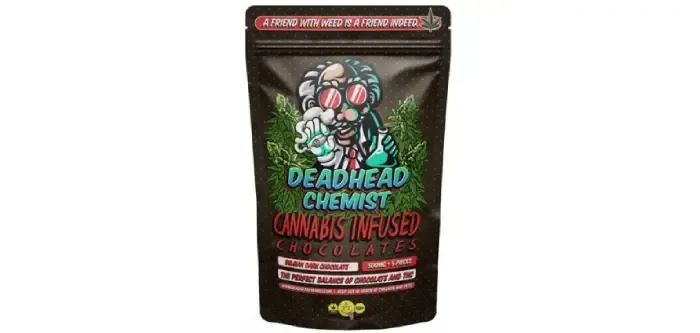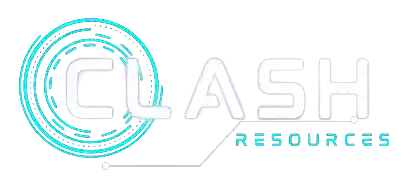
Best Edible THC: Effects and Benefits Explained
Table of Contents
- What Are Edible THC Products and How Are They Made
- How Edible THC Affects the Body Differently Than Smoking
- Popular Types of Edible THC to Try
- Common Effects and Possible Side Effects of Edible THC
- Therapeutic Benefits of Edible THC for Various Conditions
- Safe Dosage Tips and Precautions for Using Edible THC
- Legal and Safety Considerations for Edible THC Users
- Ongoing Research and Future Uses of Edible THC
- Frequently Asked Questions
Edible THC refers to food and drink products infused with cannabis extracts containing tetrahydrocannabinol, the psychoactive compound that produces the typical high. Common forms include gummies, brownies, chocolates, beverages, and tinctures. Edibles are popular for their discreet use and longer-lasting effects compared to smoking. When ingested, THC is metabolized into a stronger compound in the liver, leading to a slower onset but longer duration of effects lasting up to 12 hours or more. Benefits include relief from chronic pain, nausea from chemotherapy, MS spasticity, and appetite stimulation. However, careful dosing is important to avoid intense side effects or overdose due to delayed onset times.
What Are Edible THC Products and How Are They Made
Edible THC products are foods and drinks infused with tetrahydrocannabinol (THC), the cannabis compound responsible for psychoactive effects. Common forms include gummies, brownies, chocolates, candies, baked goods, beverages, tinctures, oils, and lozenges. The manufacturing process typically begins with extracting THC from cannabis plant material using solvents or CO2 extraction methods. Once extracted, the THC is infused into food or drink bases, making sure it’s evenly distributed for consistent dosing. Some products use THC distillate or isolate, which allows for higher purity and precise control over potency. Besides THC, many edibles also contain other cannabinoids like CBD, which can influence the overall effects. Commercial production follows strict quality controls, including lab testing to verify THC levels and check for contaminants. When making edibles at home, the cannabis is usually decarboxylated, heated to activate THC, before it’s infused into butter, oils, or alcohol-based tinctures depending on the recipe. Finished products come with clear packaging that labels THC content, serving size, and warnings to avoid accidental ingestion, especially by children or pets.
How Edible THC Affects the Body Differently Than Smoking
When THC is smoked, it enters the bloodstream quickly through the lungs and reaches the brain within minutes, producing almost immediate effects. In contrast, edible THC must first be digested and pass through the liver, where it is converted into 11-hydroxy-THC, a metabolite that crosses the blood-brain barrier more efficiently and results in stronger, longer-lasting psychoactive effects. This metabolic process means that while the effects of edibles can take anywhere from 30 minutes to 2 hours to begin, they tend to peak around 4 hours after consumption and can last between 6 to 12 hours, sometimes with residual effects lingering for up to 24 hours. Although edibles have lower initial bioavailability than smoking, the liver’s conversion enhances the impact on the central nervous system, making the experience feel more intense and often more sedating. Because the onset is delayed, users might mistakenly consume more before feeling the effects, increasing the risk of overdose. Unlike smoking, where dosage feedback is immediate, edibles require patience and careful dosing to avoid unpleasant or overwhelming experiences.
Popular Types of Edible THC to Try
Edible THC products come in many forms, each offering unique benefits and consumption experiences. Gummies and candies are among the most popular choices due to their consistent, controlled doses and ease of use. They allow users to monitor their intake precisely, making them ideal for beginners and medical users alike. Classic baked goods like brownies and cookies remain favorites for those who enjoy traditional cannabis treats, often delivering a familiar taste with potent effects. THC-infused chocolates provide a tasty, discreet option that suits both casual users and those seeking a more sophisticated edible. Beverages such as teas, sodas, and sparkling waters infused with THC offer a refreshing alternative, often favored for their quick absorption and social appeal. Oils and tinctures are versatile: they can be added to food or drinks or taken directly under the tongue for faster onset. Capsules and lozenges focus on precise dosing and convenience, especially appealing to medical users who require consistent effects without the need for inhalation. Recently, novel products like THC seltzers and infused savory snacks have entered the market, expanding choices beyond sweet edibles. Some edibles combine THC with other cannabinoids, such as CBD, to provide a more balanced effect, potentially reducing anxiety or enhancing relaxation. THC concentration varies widely across products, allowing users to select options that match their tolerance and desired intensity, from microdosed edibles with very low THC for mild effects to stronger formulations for experienced users. This variety ensures there’s an edible for nearly every preference and need.
Common Effects and Possible Side Effects of Edible THC
Edible THC often produces feelings of euphoria and relaxation, along with altered perceptions of time and sensory experiences. Many users notice an increase in appetite, commonly known as the munchies. Unlike smoking, the effects of edibles take longer to start, usually between 30 minutes to 2 hours, but they last much longer, often 6 to 12 hours. This slower onset and extended duration can sometimes make the experience feel more intense than smoking cannabis. Common short-term side effects include dry mouth, dizziness, and a rapid heartbeat. At higher doses, some users may experience negative reactions like anxiety, paranoia, or hallucinations. Over time, regular edible THC use can affect cognitive functions such as memory, attention, and learning. Tolerance may develop, meaning users need higher doses to achieve the same effects, and heavy, frequent use can lead to dependence. One advantage of edibles is that they avoid exposing the lungs to smoke toxins, reducing respiratory risks. However, the delayed onset of effects increases the risk of accidental overdoses, as it’s harder to gauge the right dose. Users should start with low doses and wait patiently to avoid unpleasant or overwhelming experiences.
Therapeutic Benefits of Edible THC for Various Conditions
Edible THC has shown promise in several therapeutic areas, particularly for chronic pain relief. Oral THC can effectively reduce neuropathic pain and other persistent pain types, sometimes allowing patients to lower their opioid use. For cancer patients undergoing chemotherapy, edible THC can help manage nausea and vomiting when other treatments don’t work. People with multiple sclerosis (MS) also report benefits from oral cannabinoids, noting a decrease in muscle spasticity. Additionally, THC edibles are known to stimulate appetite, which can support weight gain in conditions like HIV/AIDS wasting syndrome and anorexia nervosa. There is some limited evidence suggesting that oral cannabinoids may help ease anxiety symptoms, often in combination with CBD. Patients suffering from chronic pain, MS, or fibromyalgia have experienced improved sleep quality after using cannabinoids, including edibles. Small studies with synthetic cannabinoids such as nabilone have shown potential in reducing nightmares related to PTSD. However, evidence remains insufficient for many neurological and mental health disorders like epilepsy, Parkinson’s, Huntington’s, ALS, depression, and schizophrenia. One practical advantage of edible THC is that it offers a non-smoking alternative, which some patients prefer for comfort, discretion, and avoiding lung irritation.
| Condition | Therapeutic Benefit | Evidence Strength | Notes |
|---|---|---|---|
| Chronic Pain | Reduces chronic and neuropathic pain; may reduce opioid use | Substantial | Effective for various pain types |
| Chemotherapy-Induced Nausea and Vomiting | Relieves nausea and vomiting when other treatments fail | Strong | Includes approved oral cannabinoids like dronabinol, nabilone |
| Multiple Sclerosis Spasticity | Improves patient-reported spasticity symptoms | Moderate | Modest symptom relief reported |
| Appetite Stimulation and Weight Gain | Increases appetite and weight in HIV/AIDS wasting syndrome and anorexia nervosa | Moderate | Less clear benefit for cancer-related anorexia-cachexia |
| Anxiety and Sleep Disorders | May reduce anxiety symptoms (CBD role); improves short-term sleep quality | Limited to Moderate | Evidence is preliminary and mixed |
| Post-Traumatic Stress Disorder (PTSD) | Synthetic cannabinoids may reduce nightmares | Limited | Small trials with nabilone |
| Other Neurological and Mental Health Conditions | Insufficient evidence for epilepsy, Parkinson’s, Huntington’s, ALS, schizophrenia, depression | Insufficient | More research needed to confirm benefits |
Safe Dosage Tips and Precautions for Using Edible THC
When trying edible THC for the first time, start with a low dose of 2.5 mg THC or less to avoid unpleasant effects. Since edibles take longer to kick in, it’s important to wait at least 2 hours before taking more to understand how your body reacts. Avoid mixing edibles with alcohol or other sedatives, as this can increase the risk of dizziness, nausea, or anxiety. Always store edibles in a secure place clearly labeled to prevent accidental ingestion, especially by children or pets, who may be more sensitive to THC. Keep in mind that the effects of edibles last much longer than smoking cannabis, often 6 to 12 hours, so plan your activities accordingly and avoid driving or operating machinery until you are sure the effects have worn off. If you are taking other medications, consult a healthcare provider to check for possible interactions. Be aware of overdose symptoms like severe paranoia, panic, nausea, or confusion, and seek medical help if needed. Over time, tolerance can develop, so adjust your doses carefully and consider taking breaks to reset sensitivity. Finally, know the legal status of THC edibles in your area before buying or using them to stay compliant with local laws.
- Start with a low dose of 2.5 mg THC or less, especially if new to edibles.
- Wait at least 2 hours after taking an edible before consuming more to gauge effects.
- Avoid combining edibles with alcohol or other sedatives to reduce adverse effects.
- Store edibles securely and clearly label them to prevent accidental ingestion by children or pets.
- Be aware that effects last longer than smoked cannabis, so plan accordingly for activities.
- Avoid driving or operating machinery until effects have fully worn off.
- Consult a healthcare provider if taking other medications to check for interactions.
- Recognize symptoms of overdose such as severe paranoia, panic, nausea, or confusion and seek help if needed.
- Tolerance can develop over time, so adjust doses cautiously and consider breaks to reset sensitivity.
- Understand the legal status of THC edibles in your area before purchasing or using them.
Legal and Safety Considerations for Edible THC Users
THC edibles remain federally illegal in the United States, though many states have legalized them for medical or recreational use. Users must verify local laws before purchasing or consuming edibles to avoid legal trouble. Even if edibles are legal in both your home and destination states, transporting them across state lines can lead to serious legal consequences. Commercially produced edibles are required to follow labeling rules that include clear information on potency, ingredients, and health warnings. This transparency helps consumers make informed choices and reduces accidental overconsumption. Homemade edibles, however, lack standardized dosing, increasing the risk of taking too much and experiencing unpleasant side effects. Proper storage is critical, edibles should be kept locked away and out of reach of children and pets, as accidental ingestion can cause severe reactions. Users should also be aware of workplace policies regarding cannabis use, since testing positive for THC can affect employment. Operating a vehicle under the influence of THC edibles is illegal and dangerous, as these products impair motor skills and slow reaction times. Additionally, some edibles contain allergens or other additives that might trigger sensitivities, so reading labels carefully is important. Safe use means understanding the delayed onset of effects, starting with low doses, avoiding mixing edibles with alcohol or other substances, and being patient before taking more to prevent overdose.
Ongoing Research and Future Uses of Edible THC
Although edible THC products have gained popularity for both recreational and medicinal use, more rigorous research is needed to fully understand their therapeutic potential and safety. Currently, randomized controlled trials are limited, making it difficult to establish clear benefits for many medical conditions. Researchers are focusing on finding optimal dosing strategies, as the effects of edible THC can vary widely depending on the dose, individual metabolism, and cannabinoid composition. Studies comparing different THC to CBD ratios aim to identify the most effective cannabinoid profiles for specific treatments, since the balance between these compounds may influence both efficacy and side effects. Long-term safety data on commercially available edible products is also lacking, highlighting the need for extended studies to assess potential risks over time. Scientists are exploring edible THC’s possible role in mental health disorders such as anxiety and post-traumatic stress disorder (PTSD), as well as emerging research into its benefits for addiction treatment and neurodegenerative diseases like Parkinson’s and Alzheimer’s. Advances in formulation technology, including nanoemulsions, seek to improve bioavailability and speed up onset time, which could make edibles more predictable and effective. Future edible products may combine cannabinoids with other natural ingredients to enhance therapeutic effects, creating multi-target formulations. Meanwhile, evolving regulatory frameworks are starting to support safer research and development of these products, aiming to standardize dosing and improve patient outcomes. This ongoing research is crucial to unlocking the full potential of edible THC as a reliable medical option.
Frequently Asked Questions
1. How do edible THC products affect the body compared to smoking or vaping?
Edible THC takes longer to kick in because it’s processed through the digestive system, which means the effects come on slower but usually last longer and can feel stronger. In contrast, smoking or vaping delivers THC directly into the bloodstream through the lungs, causing quicker but shorter-lasting effects.
2. What factors influence the intensity and duration of effects when consuming edible THC?
The intensity and duration depend on several things like your metabolism, body weight, tolerance, and the dose you take. Eating on a full stomach can slow down absorption, while a fast metabolism may make effects fade quicker. The type of edible and THC potency also play key roles.
3. Can edible THC provide any benefits beyond recreational use?
Yes, many people use edible THC for potential benefits like pain relief, reducing anxiety, improving sleep, and sometimes helping with appetite issues. Effects vary between individuals, and it’s important to start with a low dose to see how your body reacts.
4. Why do effects from edible THC sometimes feel stronger or different than other consumption methods?
When you eat THC, your liver converts it into a compound called 11-hydroxy-THC, which can cross the blood-brain barrier more easily and tends to produce a more intense and longer-lasting high. This metabolic process is why edibles often feel stronger or different than smoking or vaping.
5. Is it safe to use edible THC regularly, and what precautions should I take?
Regular use can be safe for many adults, but it’s important to use edibles responsibly. Start with low doses, avoid mixing with alcohol or other substances, and be aware of your tolerance. If you have health conditions or are taking medications, talk to a healthcare professional before use.
TL;DR Edible THC products are cannabis-infused foods and drinks that create a longer-lasting, often stronger high than smoking due to liver metabolism. Popular options include gummies, baked goods, chocolates, and tinctures. Effects usually take 30 minutes to 2 hours to start and can last up to 12 hours. While edibles offer benefits for chronic pain, chemotherapy-induced nausea, and MS spasticity, potential side effects range from relaxation to anxiety and paranoia. Starting with low doses and waiting before re-dosing is key to avoid overdose. Users should be aware of legal restrictions, safe storage, and potential drug interactions. Ongoing research aims to better understand dosing, long-term effects, and medical applications.



